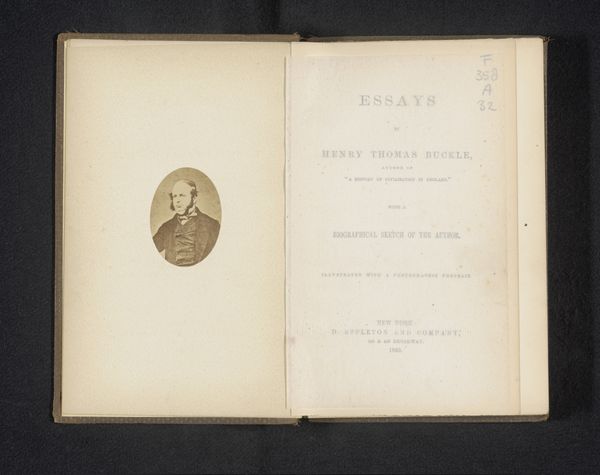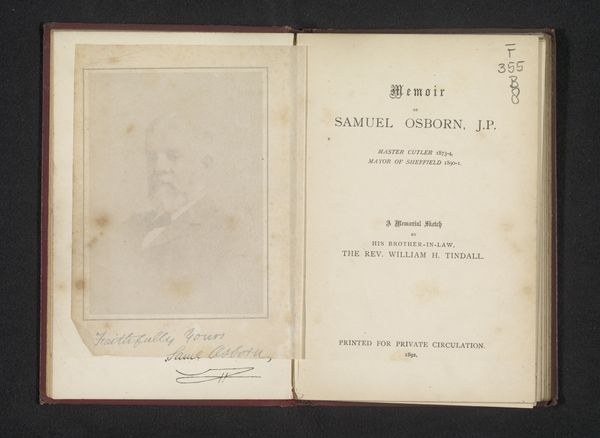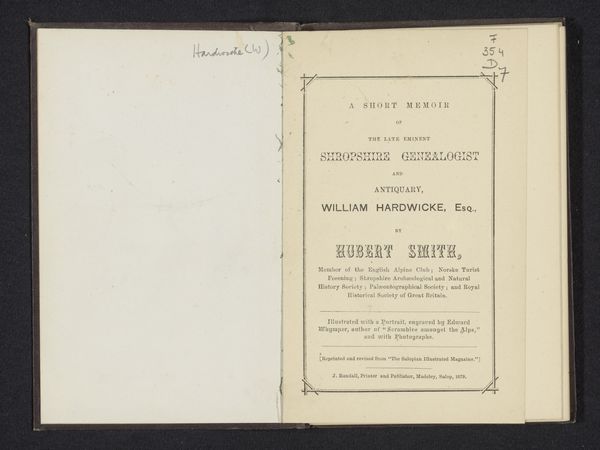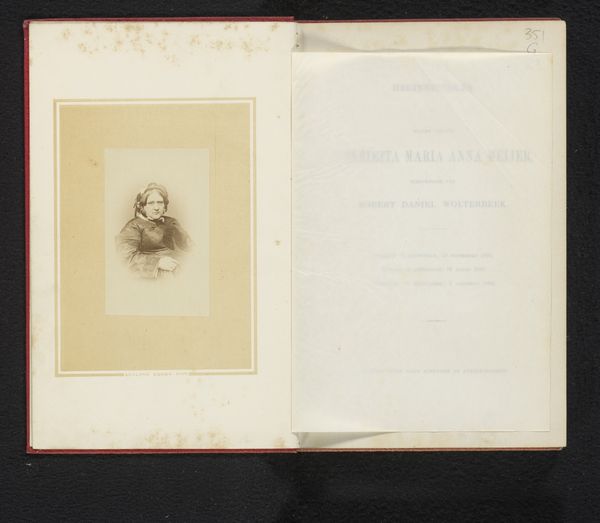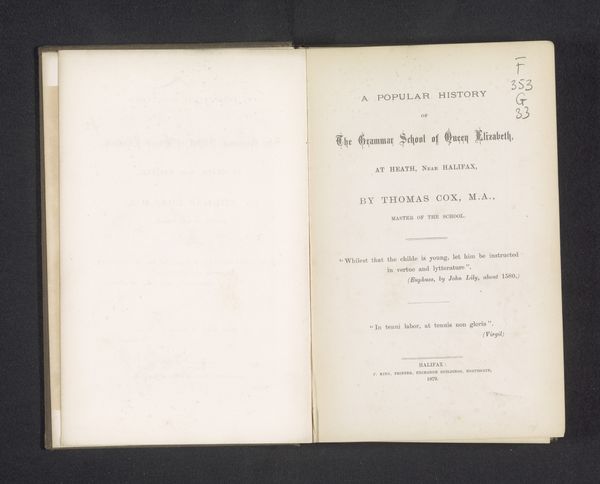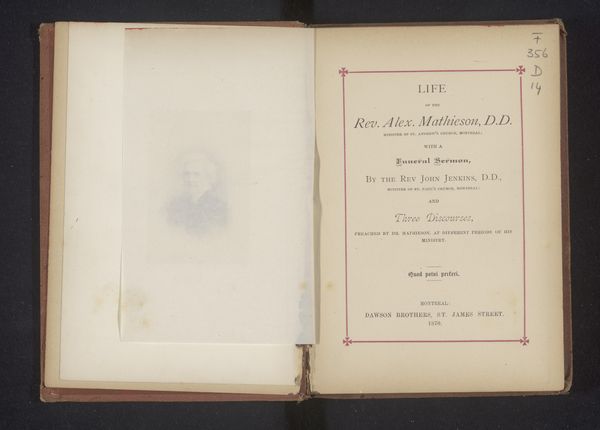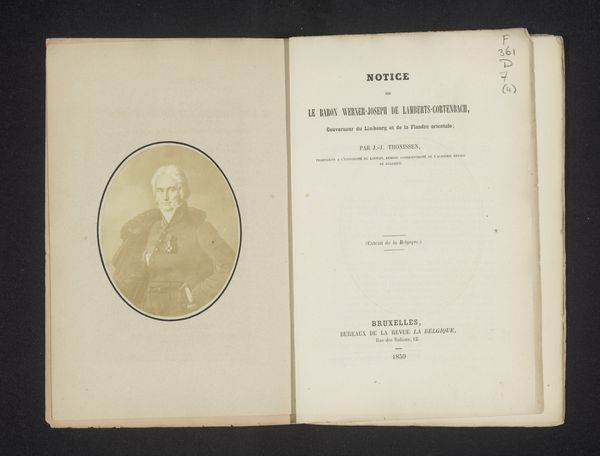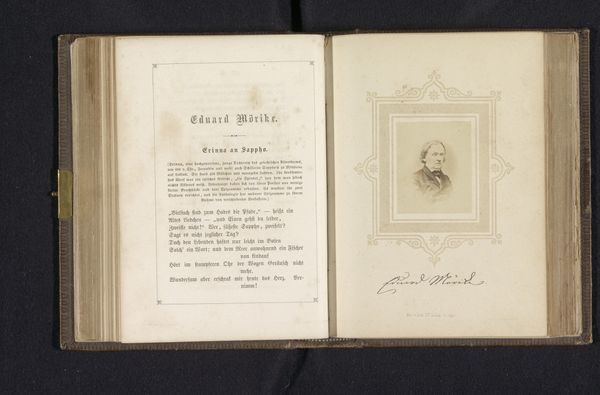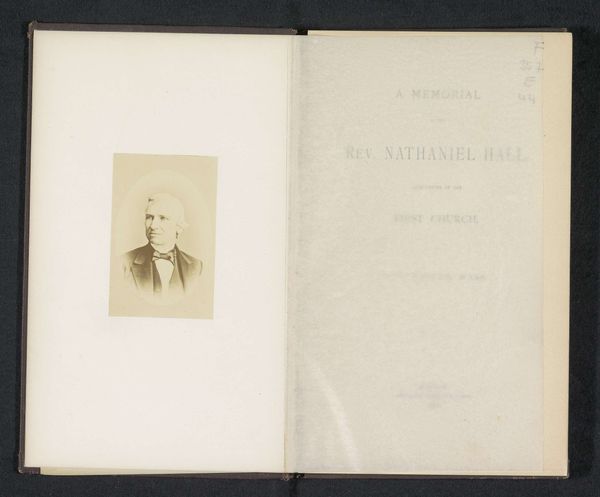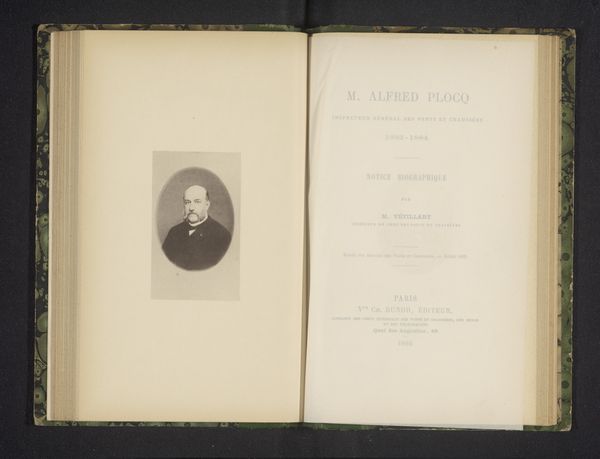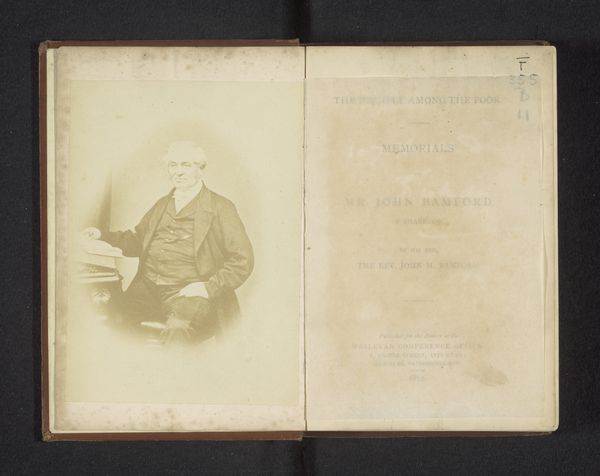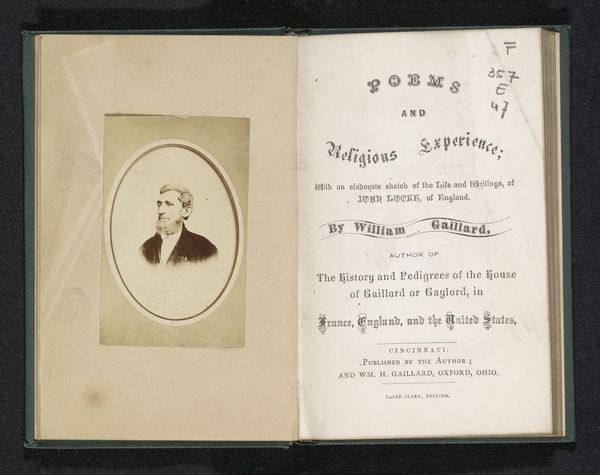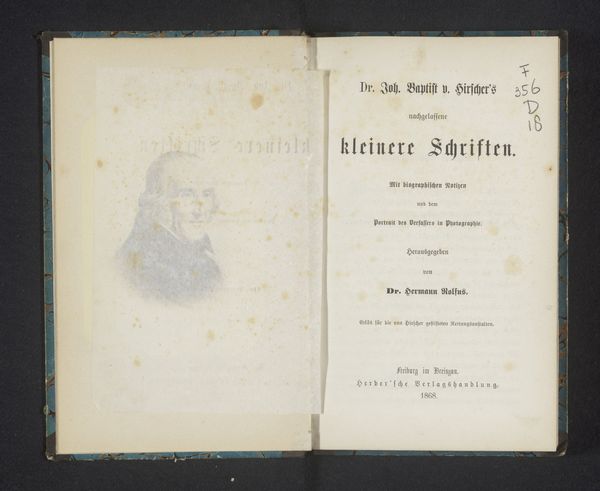
print, photography, albumen-print
#
portrait
#
aged paper
# print
#
sketch book
#
personal journal design
#
photography
#
personal sketchbook
#
journal
#
fading type
#
stylized text
#
thick font
#
handwritten font
#
albumen-print
#
historical font
Dimensions: height 186 mm, width 126 mm, thickness 16 mm
Copyright: Rijks Museum: Open Domain
Curator: What a fascinating object! We're looking at an albumen print from 1877 titled "Scraps from an artist's sketch book," by Selim Rothwell. Editor: It has this sepia-toned, delicate quality that gives it such an intimate feel, almost like finding a forgotten treasure in an attic. Curator: Albumen prints like this were made using a process involving egg whites to bind the photographic chemicals to the paper, making the tones appear very smooth and luminous. What strikes me most is how this format elevated what might have just been sketches or studies into a published, presentable collection. Editor: Yes, that transition from personal notebook to something presented for public consumption is very intriguing. The very name, "Scraps," suggests an informal, almost discarded, aesthetic, yet the photographic medium lends it a formality. And seeing it bound within book covers affects its presentation significantly. How was this “sketchbook” marketed and to whom? Was there a limited print run? Curator: Good questions. Knowing this was produced and printed by "The Daily Chronicle" in Bolton speaks to a certain kind of local artistic consumption, and the growing printing and photographic industries in England at the time. How available would artistic knowledge have been to the public outside major urban hubs? Did works like this assist or inspire them to find that artistic sense, too? Editor: Exactly. The inclusion of the author's portrait adds another layer. Here's Selim Rothwell himself, inviting us into his artistic process. How self-aware and politically astute must a Victorian artist be to insert a photomechanical portrait alongside a collection of creative works? Curator: The image's placement feels carefully staged—the signature placed alongside a portrait, giving both artist and product an indelible presence in this social transaction. Editor: I'm left thinking about the nature of photographic reproduction and how the creation and sale of publications like “Scraps” shaped how art and artists presented themselves to their contemporaries. Curator: Indeed, examining its materiality alongside its cultural purpose truly provides a wider lens. Thank you.
Comments
No comments
Be the first to comment and join the conversation on the ultimate creative platform.
